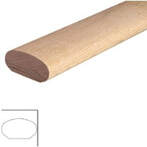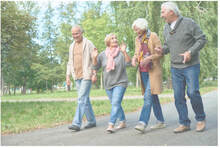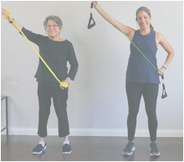|
Use it or lose it  Did you know the use-by date on food isn’t valid once you’ve opened the packet? Belinda Allan takes a look at the food dating game and offers advice on how to keep your family safe from food-bourne illness. According to a survey funded by the New Zealand Food Safety Authority (NZFSA), people are more worried about food poisoning than any other food related issue, and not without reason. Every year, there are an estimated 119,000 cases of food-bourne illness. Up to 40 percent of those are believed to be caused by unsafe food handling practices in the home. Taking notice of ‘use-by’ and ‘best-before’ dates is one way you can reduce your risk. Most packaged foods with a shelf life of less than two years must have one of these labels. There are some exceptions. Bread, for example, can have a ‘baked on’ date. The ‘use-by’ date is about food safety. It is determined by the time required for pathogens in food to grow to levels above which illness might occur. Providing the food is stored correctly and isn’t opened, it should be safe to eat until its use-by date. After the use-by date, a food can’t legally be sold and shouldn’t be eaten. Use-by dates usually appear on perishable food like meat, poultry and deli products.  ‘Best-before’ dates are about food quality. Foods can be sold after their best-before dates provided they are fit for consumption. However, they may have lost quality and some nutritional value. You’ll find best-before dates on less perishable foods, such as cereals, flour and canned goods. It sounds simple but the reality can be confusing. Once you’ve opened the packaging, the shelf life is the same as if the product was unpackaged. For example, a packet of vaccuum-packed smoked salmon may have a use-by date that is one month away, but once you’ve opened it, you should keep the salmon in the fridge and eat it within two days. Food manufacturers have to provide directions for use and storage on the packaging to ensure the food will keep until the date shown. This should include information about how quickly the food should be eaten after it is opened. We checked out the deli section of the supermarket and found that most manufacturers complied. But some provided no instructions on what to do once you’ve opened the pack. Our Advice
How long should you keep it for? According to Dr Greg Simmons, from the Foodsafe Partnership, how long it is safe to keep a particular food depends on many factors: its water and protein content, its freshness pathogens likely to grow on the food, and your immune status. Also, use-by dates should be treated with caution if you are pregnant or have lowered immunity due to illness or medical treatment. Always take note of the use-by date and storage instructions if there are any. As a general guide, here’s how long you can keep food in your fridge once the packaging is opened. For safe food chill out!
Consumer 438 July 2004 Fun in the sun Outdoor activities for aged care residents From: Aged Care New Zealand Issue 02 2022  After the winter months cooped up inside, many aged care residents look forward to getting out into the fresh air. As spring approaches, seniors living in aged care should be encouraged to enjoy the warmer weather and reap the health benefits of some time spent outdoors. After the winter months cooped up inside, many aged care residents look forward to getting out into the fresh air. So as the warm weather slowly starts to return, the prospect of spring can create feelings of anticipation and joy for everyone. Staying active and enjoying the outdoors is particularly important for the elderly so finding activities that are suitable to their abilities is essential. Some favourite spring activities often enjoyed include walking, picnicking, and working in the garden. Of course, aged care residents range from the more adventurous who might enjoy swimming to those who just love the atmosphere outdoors and want to sit somewhere and simply drink in the fresh air. It all gives joy and adds meaning to our lives. The value of going outdoors As warmer weather returns, it is important to realise how truly beneficial getting outdoors can be for the elderly. So spring is a great opportunity to add some new activities to their routine. Carers can tempt residents outside with interesting ideas to stay physically and mentally active. Getting outside and into the sunshine exposes our bodies to the essential Vitamin D. This vitamin is crucial for strong bones, healthy muscles and improved mood. Daylight is also important for regulating our body’s clock, helping to promote a healthy sleeping schedule. Research has shown that people with dementia who undertake between 10 and 15 minutes of activity outside a day improved their health significantly. For the elderly with mobility issues, simply sitting outside for a short period of time can have positive mental and physical health benefits. It is important to monitor the position and make sure the residents are wearing protective clothing, sunscreen and drinking plenty of water when exposed to the sun. Planning outdoor activities Elderly people with Alzheimer's and other forms of dementia may find outdoor tasks difficult or feel overwhelmed by a change in their preferred routine. However, with the help and reassurance from professional carers or family members, simple and enjoyable outdoor activities can still be incorporated into their care plan. Activities can be planned to occur around the same time each day. They can be designed to coincide with the times when the person with dementia may be most often active. They can be encouraged to play a part of the activity or simply made comfortable in a spot where they can observe others. Here are a few other things to consider when planning outdoor activities:
Keeping it local makes it easier Aged care residents do not need to be overly active to enjoy the mental and physical health benefits of spending time outdoors. The outdoor activities will need to be suitable for residents who have a wide range of limitations. So, for some residents, simply spending time sitting in the dappled shade or on the verandah can be enough. Other outings can be planned to meet the abilities of the more active seniors, from a walk around a park, or a visit to a swimming pool, the zoo or the botanical gardens. When choosing an outdoor activity consider the hobbies and interests the residents used to enjoy. Often the pleasure and relaxation they felt doing these activities in the past will return. A sporting event might be overwhelming for some seniors but attending a home-grown social game might be a great way to spend an afternoon. There is the same action and excitement, but with less noise and confusion. Taking advantage of the local area by walking around the block or wandering around window shopping can be a great way for seniors to get some light exercise outdoors. For residents in wheelchair a trip around the aged care residence can be adventure enough. Many times, simply deviating from the usual routine and getting a breath of fresh air outdoors will lift the mood of aged care residents. Creating a variety of activities that are realistic and enjoyable can generate a great deal of happiness. Ref: Aged Care Issue 02 2022 Furniture and fittings for residents with dementia For people with dementia the world can be a confusing and frightening place.  Dementia affects brain function and can impact a person’s thoughts, behaviour and ability to perform everyday tasks. Support for people with dementia is vital and their environment must help to minimise the difficulties they experience. Living in an aged care facility with well-designed personalised spaces and suitable furniture and fittings can significantly improve the physical, psychological and social needs of residents with dementia. Personalising spaces When designing or preparing a living space for people with dementia practical and comforting elements need to be incorporated. It is essential to include equipment and fittings that assist residents with the practical day to day requirements, and it is equally important to facilitate the personalisation of private bedrooms and communal space with articles that have meaning to the residents. Strategically placed familiar furniture, ornaments, art works, treasured keepsakes, photo albums, framed photographs or other items of significance to residents can help generate reassuring emotions. In private bedrooms a display of personal items may serve to support the identity of a person with dementia by reminding them of family members and the things they have enjoyed and achieved in their lives. In common areas a similar display of reminders from residents’ lives helps personalise the shared space and increase the residents' sense of belonging. It may also serve to foster exchanges with others in the communal areas and help staff to get to know the residents more personally. Providing navigational cues People with dementia can be confused by distances and directions which makes it difficult for them to find their way around. This can be very distressing for people with dementia and create difficulties for carers. To assist their navigation the indoor environment can be designed with distinctly different rooms or zones that utilise helpful visual cues, such as wall, floor and furniture colour. This can alleviate the associated anxiety and confusion of residents when they don’t know what room they are in or how to find their way around. Navigation is also assisted when a familiar item is hung on a resident’s bedroom door or located just outside it. Thoughtful layout of fixtures, fittings and furniture can provide reminders that help people with dementia navigate the space and recognise the purpose of the space they are in. Suitable fixtures and fittings When choosing fixtures and fittings it’s important that their purpose is early recognised. They need to be safe and comfortable to use and suit people with reduced manual strength and dexterity. Grab rails in bathrooms are especially important with the risk of slippery surfaces posing a serious hazard, especially for people with dementia.  Sturdy handrails for internal and external stairs can be very helpful to assist residents to safely use the stairs. An added safeguard is to make the handrail extend beyond the first and last steps with clearly defined ends. This makes it easier to determine the length of the staircase and may lessen the risk of elderly residents misjudging the top or bottom step. Oval shaped handrails on stairs are particularly useful as they are more ergonomic than round or square handrails, With the soft curved edge of a round handrail and the broad flat surface of a square handrail, an oval shaped handrail is more comfortable for residents to support themselves with their forearms when moving up and down the stairs. Colour also helps to encourage the use of the handrails and grab rails. If they are in a colour that contrasts with the wall, they will be easier to locate. Handles and safety locks Rather than conventional fitting, curved or C shaped handles are best for doors, drawers and cupboards that need to be operated by people with dementia. These are easier to use by people with reduced strength manual dexterity. Fixed handles set at a 45-degree angle are also easier to use for elderly residents. Safe door locks are important to protect people with dementia as they often wander off and become lost. They need to be protected from accessing dangerous environments or from leaving the premises without assistance. Locks must also be fitted to cabinets to safeguard residents with dementia from gaining access to toxic chemicals, medications or dangerous equipment. There are many specialised fittings that can be installed in aged care facilities to prevent residents with dementia from gaining access to places that present a risk to them. The importance of furniture Furniture can make a huge difference to create an environment that feels more like home. The right furnishings can transfer even a cold, harsh place into a welcoming, familiar ambience. Choosing the right furniture is important for physical and psychological well-being. Moving is highly stressful to people with dementia but if their surroundings are kept as consistent as possible, the transition is less difficult. Whenever possible, personally owned furniture, such as a favourite armchair, should be installed in the resident’s room. If the resident is relocated, the old armchair goes too, and if possible, placed in a simitar position in its new location. The shape of furniture and its material can contribute to a soothing ambience. Timber furniture can be a good choice as the lustre of wood tends to make a room look cosier than some contemporary finishes. The shape of a table can be important too. A square or oblong dining table has more defined spaces for people to sit while eating and this can be less disconcerting to a person with dementia. Carefully selected furniture with distinct colours or tones can help to clearly distinguish it from the background and reduce trips and collisions. Smaller lounge room furniture, such as coffee tables or lamp tables, are safest when in a contrasting colour for visibility. It is best to minimise clutter or rugs, as these can be trip hazards. Shelving can be mounted on the walls to display books and other items out of harm’s way.  Placing a chair near a window provides a tranquil space to support times of contemplation. People with dementia may sit for extended periods of time, so choosing the right chair for comfort is important and this might well be the favourite old armchair. There are many design elements that can help to promote independence for people with dementia. When the environment is familiar, easy to access and navigate, it helps to support everyday task and promote safety, security and comfort. Following these tips may help to improve the quality of care that an aged care facility can provide its residents with dementia. Ref: Aged Care NZ Issue 02 2022 Ability, not age should be the only factor determining what exercise you do Research has repeatedly shown that exercise in older adults is linked with lower disease risk, reduced risk of falls and better overall health.  It is a common assumption that exercise in older people is difficult and dangerous, so it’s perhaps best avoided. But this is often not the case – even if these ideas are ingrained in society. Research has repeatedly shown that exercise in older adults is linked with lower disease risk, reduced risk of falls and better overall health. But misconceptions about age and exercise still exist – and it’s not difficult to see why. Exercise recommendations, even from health authorities, are often based on age. But if you look closer, you notice that these recommendations are often identical to those for younger people, with the difference being in assumptions of ability. Indeed, it’s true as you age you lose muscle strength, bone density, and your body composition shifts from muscle to fat. However research shows exercise training at any age results in positive gains to muscle mass, muscle strength, bone density, and improvements to overall health – even to people as old as 97. Safety is also a commonly perceived barrier when exercising at an older age. However it appears that the benefits of exercise, both aerobic and resistance, outweigh the risks of injury or cardiovascular events. When choosing what type of exercise to do, it’s your ability – not your age – that should be your primary consideration. Older people are more likely to suffer from one or more age related diseases or health conditions (such as type 2 diabetes, osteoarthritis, heart disease and stroke) that may affect their ability to take exercise. But risk of and recovery from these conditions are all positively influenced by daily exercise. Even arthritis symptoms can be reduced by low impact movements. Ability So what type of exercise should you be doing? Prescribing training based on a person’s age is too simplistic, as people can be very different from one another. For example, I’ve met both frail 65-year-olds and others that can outpace me on the track. Exercise prescription should be done by ability. And, whichever mode you choose, remember it should always challenge you.  Maintaining a high level of low intensity activity (such as walking, jogging, or cycling) is a lifestyle choice correlated with longevity. Given that almost 50% of UK adults don’t meet minimum activity guidelines, this is an immediate positive impact that people can have on their fitness and health, both through the benefits of being active and by off-setting the negative health effects of being sedentary. Simply moving around more is a general way of maintaining fitness and general health. For example, standing up every ad break when watching TV, walking to the shops instead of driving, or taking the stairs are all great ways of increasing activity. However, other types of workouts may also have similar benefits for older people. High intensity interval training (HIIT) exercise, which involves exercising at (or near) 100% effort for short bouts followed by rest, is a popular form of aerobic training. While HIIT training is often assumed to be only for those who are athletic or young, our research shows that HIIT training in both older men and pre-diabetic older men and women, is beneficial to overall health. It’s worth noting that we need stationary bikes of safety, as an intense bout of HIIT exercise may make people of all ages feel a bit faint. And when HIIT training incorporates leg balance and strength exercises there’s both perceived and actual deceases in fall risks to older people, as well as cardiovascular improvements. Resistance training, or exercises that require your maximal strength, is also a great option for people of every age. Not only will many older people be capable of performing resistance training, they will also benefit greatly from it – with studies showing strength and resistance training improves bone density, muscle mass, and physical ability.  Resistance training also doesn’t need to involve heavy weights in a gym, but as a general guide the movement should be challenging and near the limit of your strength if repeated about ten times. For example performing a chair squat (getting up from a seated position repeatedly) can be made harder by holding weights, cans or even a bottle of milk. It can be made harder still by balancing on one leg as you stand up. While older people are likely to gain muscle mass and strength from exercise, it does get harder to build muscle tissue as you age. Even elite athletes, who maintain lifelong high levels of training see decreases in performance as they age.
But fitness isn’t the only positive change from exercise. Exercise is also shown to improve mental health, wellbeing and cognitive function, alongside improved bone density and longer life. Improved bone density from weight lifting may also minimise injury if an older person does have a fall. Balance is also an important skill at any age – and this skill can be trained. Improved balance may prevent falls or injuries from falls in older people. Activities such as yoga or tai chi may improve balance. But even as simple as standing on one leg while putting your socks on can challenge your balance. A great combination of strength and balance exercises are ‘asymmetrical exercises’ which involve moving only one side of the body at a time. This can be as simple as balancing on one foot whilst moving the other leg back and forth, or using one arm at a time to perform a lifting or throwing movement to challenge and improve balance. In short, the best type of exercise – regardless of your age – has already been outlined by the NHS. Aim to be physically active daily, do activities that improve strength, flexibility, and balance at least two days a week, get at least 150 minutes of moderate intensity activity, or 75 minutes of vigorous intensity activity a week, and reduce time spent sitting or lying down. And no matter your age or ability, do exercises that continue to challenge you Author: Bradley Elliott, Lecturer in Physiology, University of Westminster. Ref: Aged Care NZ Issue 02 2022 If you need help to get started with an exercise programme our friendly physiotherapists can help. Just contact Therapy Professionals Ltd Phone 377 5280 email: [email protected] |
AuthorShonagh O'Hagan Archives
July 2024
|



 RSS Feed
RSS Feed